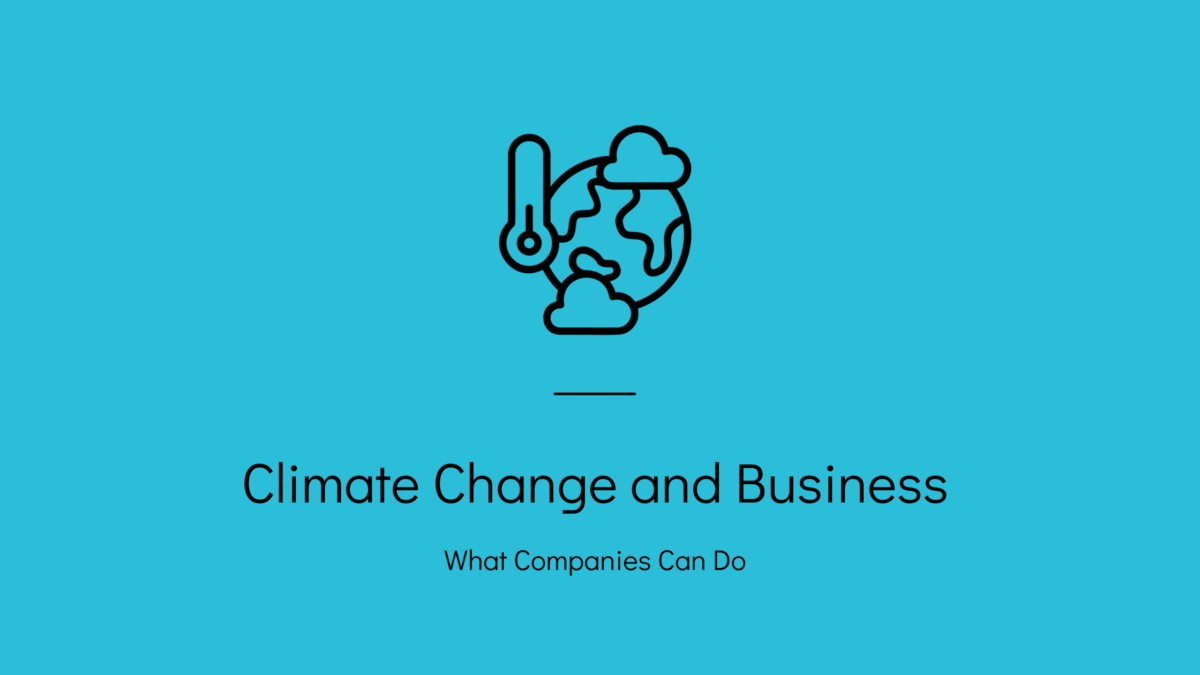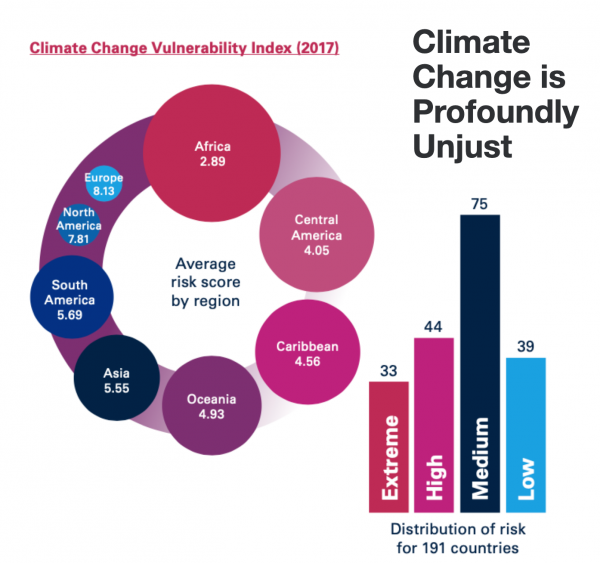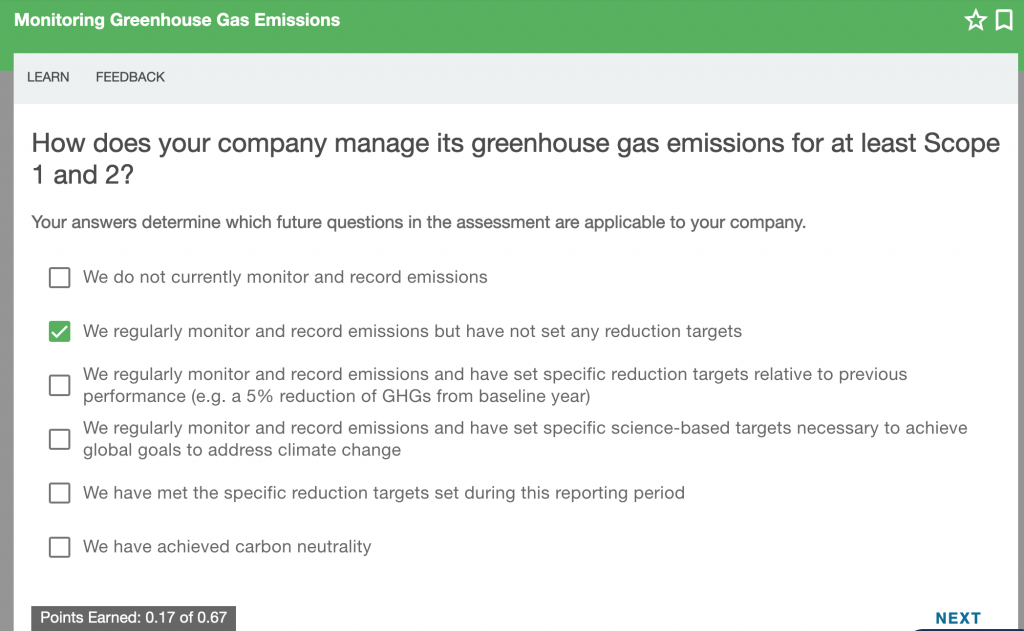
For many small businesses, it can be hard to figure out what to do about climate change. The problem seems so vast and daunting.
It’s not that they don’t want to do something or that they don’t believe it’s important.
Rather, what I hear from people is that they don’t know what to do or how to do it. I’ve worked with many clients who are ready and willing to take action, once they understand how to do so.
Understanding Climate Change
First, it might help to take a step back to better understand why this is so important.
Human activities are releasing greenhouse gases into the atmosphere, causing the climate to change and become warmer. The 2015 Paris Agreement recognized that limiting this warming to “well below” 2 degrees Celsius compared to pre-industrial levels would be necessary to avoid the worst effects of climate change.
Three years later, in 2018, the U.N’s Intergovernmental Panel on Climate Change (IPCC) issued an alarming report that found that there was a significant difference between limiting warming to 1.5 degrees vs. 2 degrees. To limit warming to 1.5 degrees would require reducing global emissions by 45% by 2030, and to net zero by 2050. To reach net zero would require reducing emissions and then removing remaining emissions from the atmosphere.
Just one month later, the U.S. Climate Report, mandated by Congress and issued by 13 federal agencies, laid out the damage that climate change will do to the economy, public health, and the environment.
If the science makes your eyes glaze over, you’re not alone, so let’s look at the real-world impacts of this. Among other things, the effects of global warming include deadly heat waves, loss of species, lower crop yields and more, and it all becomes much worse with an extra half degree of warming. The Department of Defense has found that climate change poses a threat to national security. The U.S. has already resettled its first climate refugees.
This is a very real, very serious threat to all of us.
What is Climate Justice?
Climate change is not just an environmental issue. It’s important to understand the intersection of climate change and social justice. Climate justice recognizes that the adverse impacts will fall disproportionately on those who are least responsible for them.
“This crisis causes disproportionately negative impacts on the people who are least responsible for creating it – Black, Indigenous, and People Of Color –communities that are impoverished and groups who are minoritised worldwide.” ~Dr Ellonda L. Williams, Director of Justice, Equity, Diversity & Inclusion, B Lab Global
On a global level, this means that Africa and Central America will bear the brunt of the climate crisis. They represent some of the least developed countries in the world and have among the lowest carbon emissions, yet they are most at risk.

On a domestic level, it means that the BIPOC communities that have the least resources will also feel the worst effects. The racial disparities around climate change are due to multiple reasons, including being more exposed to air pollution from emissions and having fewer resources to bounce back after a natural disaster.
Climate change is a social justice issue.
Understanding Your Company’s Emissions
As business owner, you have a choice in how you manage your company’s greenhouse gas (GHG) emissions, ranging from not doing anything to achieving carbon neutrality.
This is captured on the B Impact Assessment (BIA) as a full range of options. I recommend that clients always consider the next step beyond what they’re currently doing. For example, if they’re not currently monitoring emissions, then that is a good place to begin; if they are monitoring but haven’t set reduction targets, it may be time to begin doing so.

Even if your company is small, it does engage in activities that result in emissions and should monitor them (yes, that even applies for home-based service professionals!).
Your emissions fall into three categories: Scope 1 (direct emissions result from buildings or vehicles you own), Scope 2 (emissions resulting from your use of electricity), and Scope 3 (everything else, including business travel, employee commutes, supply chain activities, and more). The BIA and most standard GHG management tools recommend that you start with Scope 1 and 2, since those are the ones that you have most control over.
If this is starting to sound confusing, don’t worry – it doesn’t have to be.
As with almost anything else, you can always start simply, including by using free online calculators such as those provided by CoolCalifornia.org or the Bonneville Environmental Foundation.
However, it will be easier for long-term tracking if you have a way to easily preserve, benchmark, and update your data. For our clients, we often use a customized spreadsheet that has been designed for this purpose. For additional assistance and support, we recommend our B Corp friends at Compare Your Footprint and Climate Positive Consulting.
Developing Your Net Zero Strategy
Because so much is at stake with the changing climate, it’s important that companies take action that is commensurate with the scope of the challenge.
In keeping with the goals set forth in 2015 Paris Agreement, we need to shoot for net zero emissions, which means removing the same amount of emissions from the atmosphere as we release into it. Doing so will require setting science-based targets.
Here’s what your company can do to develop its own reduction strategy:
- Get informed – understanding global warming, its impacts, and how companies large and small can respond involves keeping up with a dynamic, rapidly changing field. Learning on both an individual and organizational level is key.
- Declare a climate emergency – the window of opportunity that we’ve had for years to address a warming planet is rapidly closing. This is no longer just an environmental issue. It’s an emergency and requires a requisite – and public – response to both raise awareness and make it a priority.
- Calculate your carbon footprint – you can’t manage what you don’t measure, and you can’t reduce your emissions if you don’t know what they are.
- Develop your reduction strategy – once you know where your emissions are coming from, you can develop an action plan to reduce them. This will, of course, require that you track progress against your plan.
- Share your story – we’re facing an unprecedented crisis, and sharing your story contributes to the collective learning that is needed to help others along.
The single best resource to help you on this journey is the B Corp Climate Collective, a group of B Corps that have set stringent reduction targets of Net Zero by 2030 – far more ambitious than the Net Zero by 2050 goals recommended by the IPCC’s 2018 report. The website is full of useful, free resources to help you develop your own net zero strategy.
Next Steps
Identify where your company is on its journey by looking at the steps listed above.
What steps have you already taken? Did you skip a step, such as declaring a climate emergency? Have you done this work without helping others by sharing your own story?
These steps build off each other, helping your company to be informed, take action, and raise the necessary awareness about the climate crisis.
Whatever steps you take, it’s the action and forward progress that’s important.